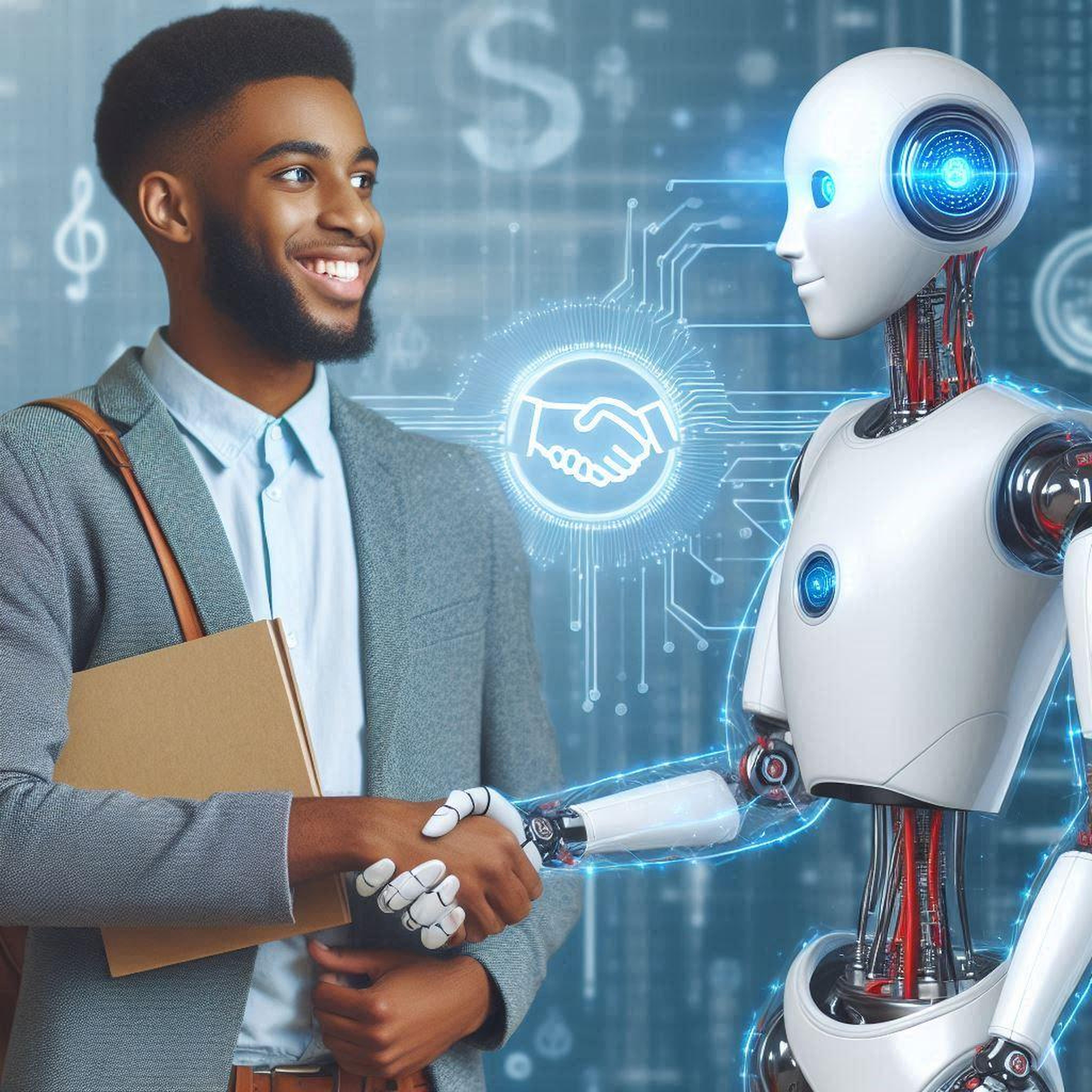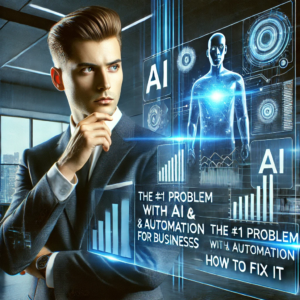Self-Improving AI Agents: Paving the Way for Intelligent Automation
Self-improving AI agents are revolutionizing the landscape of artificial intelligence, paving the way for unprecedented advancements in technology.
As we delve into the exciting realm of AI development, we’ll explore how to build these cutting-edge agents using innovative tools like Autogen Studio and MyCk.
This journey will not only demystify the process but also equip you with the knowledge to create your own self-improving AI systems.
We strongly recommend that you check out our guide on how to take advantage of AI in today’s passive income economy.
Table of Contents
Setting Up the Development Environment
Installing Essential Tools
To begin our adventure in crafting self-improving AI agents, we need to set up a robust development environment.
The first step is to install Visual Studio Code (VS Code), a powerful and versatile code editor.
Once VS Code is up and running, we’ll move on to installing Python, the programming language that will serve as the foundation for our AI agents.
Python environments can be tricky to manage, but tools like Miniconda make this process significantly easier.
With Miniconda installed, we can create isolated Python environments for our projects, ensuring clean and organized development.
Configuring the Environment
After installing the necessary tools, it’s time to configure our environment.
Open your terminal or command prompt and verify the installation of Miniconda by typing ‘conda –version’.
Next, create a new Python environment specifically for our self-improving AI agents project.
Use the command ‘conda create -n tutorial python=3.11’ to set up an environment with Python 3.11, as recommended by Microsoft for optimal compatibility with Autogen Studio.
Activate the newly created environment and prepare to install the Autogen Studio package.
Introducing Autogen Studio
Understanding Autogen Studio
Autogen Studio, developed by Microsoft, is a groundbreaking AI agent interface that simplifies the process of building teams of self-improving AI agents.
This innovative tool eliminates the need for extensive coding, making it accessible to a wider range of developers and researchers.
Autogen Studio provides a user-friendly interface for creating, managing, and deploying AI agents, allowing for rapid prototyping and experimentation.
Installing Autogen Studio
To harness the power of Autogen Studio, we need to install it in our Python environment.
Use the command ‘pip install autogen-studio’ to download and install the package.
Once installed, we can launch the Autogen Studio interface by running ‘autogen-studio ui –port 8081 –app-dir folder’ in the terminal.
This command starts the Autogen Studio web interface, which we’ll use to build our self-improving AI agents.
Designing Self-Improving AI Agents
Creating Agent Roles
In our quest to build self-improving AI agents, we’ll create a team of specialized agents, each with a unique role.
The first agent we’ll design is the Planner, responsible for creating step-by-step plans based on user input.
Next, we’ll create a Programmer agent that will execute the plans provided by the Planner.
The third agent in our team will be the Optimizer, tasked with analyzing and improving the code produced by the Programmer.
Configuring Agent Parameters
For each agent, we need to configure various parameters to define their behavior and capabilities.
These parameters include the agent’s name, description, system message, and temperature setting.
The system message is particularly crucial as it provides the agent with its core instructions and defines its role within the team.
For example, the Planner’s system message emphasizes creating clear, step-by-step plans without writing any code.
Implementing Skills and Tools
Self-improving AI agents can be enhanced by giving them access to various skills and tools.
These can include API integrations, data processing functions, or specialized algorithms.
In our case, we’ll focus on implementing a skill that allows our agents to interact with the Google Maps Geocoding API.
This skill will enable our agents to find exact coordinates for given locations, demonstrating their ability to work with external data sources.
Building the Agent Workflow
Designing the Workflow
With our agents created and configured, the next step is to design a workflow that orchestrates their collaboration.
Autogen Studio’s group chat feature allows us to create complex workflows where multiple agents work together seamlessly.
We’ll set up a workflow that begins with the Planner creating a strategy, followed by the Programmer implementing the code, and finally the Optimizer refining the solution.
Implementing the Manager Agent
To oversee the entire process, we’ll implement a Manager agent.
This agent acts as the central coordinator, directing the flow of information between the Planner, Programmer, and Optimizer.
The Manager’s system message is critical, as it defines the order of operations and ensures that each agent’s output is properly utilized by the next agent in the workflow.
Testing and Refining the Self-Improving AI Agents
Initial Testing
With our self-improving AI agents set up, it’s time to put them to the test.
We’ll start by giving them a task to create a function that interacts with the Google Maps Geocoding API.
This test will demonstrate their ability to plan, code, and optimize a solution collaboratively.
Analyzing Results and Iterating
As we run our tests, we’ll closely analyze the results and the interactions between our self-improving AI agents.
It’s important to note that the process may not be perfect on the first try, and that’s okay.
The beauty of self-improving AI agents lies in their ability to learn and refine their approach over time.
Troubleshooting and Optimization
If we encounter issues during testing, we’ll need to troubleshoot and optimize our setup.
This might involve adjusting the agents’ system messages, refining the workflow, or even creating new agents to handle specific tasks.
The iterative process of testing and refining is crucial for developing effective self-improving AI agents.
Advanced Techniques for Self-Improving AI Agents
Implementing Memory and Context
To enhance our self-improving AI agents, we can explore implementing memory and context-awareness.
This allows agents to retain information from previous interactions and make more informed decisions over time.
Techniques like vector databases or fine-tuning language models can be employed to achieve this level of sophistication.
Exploring Multi-Modal Capabilities
As we advance our self-improving AI agents, we can consider expanding their capabilities to handle multiple modalities.
This could include processing and generating text, images, and even audio or video content.
By incorporating multi-modal abilities, our self-improving AI agents become more versatile and capable of tackling a wider range of tasks.
Ethical Considerations and Best Practices
Ensuring Responsible AI Development
As we delve deeper into the world of self-improving AI agents, it’s crucial to consider the ethical implications of our work.
We must ensure that our agents are designed with safeguards to prevent misuse and to promote beneficial outcomes for society.
Implementing robust testing procedures and establishing clear guidelines for AI behavior are essential steps in responsible development.
Maintaining Transparency and Explainability
One of the challenges with self-improving AI agents is maintaining transparency in their decision-making processes.
As developers, we should strive to create systems that can explain their reasoning and actions in human-understandable terms.
This not only builds trust but also allows for better oversight and control of AI systems as they become more sophisticated.
Future Prospects of Self-Improving AI Agents
Potential Applications
The future of self-improving AI agents is bright, with potential applications spanning numerous industries.
From healthcare and finance to education and scientific research, these agents could revolutionize how we approach complex problems.
Imagine self-improving AI agents that can assist in drug discovery, optimize supply chains, or even help in tackling climate change.
Challenges and Opportunities
As we look to the future, we must also acknowledge the challenges that come with advancing self-improving AI agents.
Issues such as AI alignment, ensuring that AI goals remain aligned with human values, will become increasingly important.
However, these challenges also present opportunities for innovation and the development of new techniques in AI safety and control.
Conclusion
Self-improving AI agents represent a significant leap forward in the field of artificial intelligence.
By following the steps outlined in this article, you’ve gained insights into creating your own team of self-improving AI agents.
As we continue to refine and expand these technologies, the possibilities for innovation and problem-solving are truly limitless.
Remember, the journey of developing self-improving AI agents is one of constant learning and iteration.
Embrace the challenges, celebrate the successes, and always strive to push the boundaries of what’s possible in AI development.
With dedication and creativity, you can be at the forefront of this exciting technological revolution, shaping the future of AI one self-improving agent at a time.
Frequently Asked Questions:
How can AI improve itself?
Self-improving AI agents can enhance their capabilities through various mechanisms:
- Continuous learning: AI agents can analyze their performance and outcomes to refine their decision-making processes.
- Adaptive algorithms: Implementing algorithms that adjust based on new data and experiences allows for ongoing improvement.
- Meta-learning: Self-improving AI agents can learn how to learn more efficiently, optimizing their own learning processes.
- Knowledge integration: By combining information from multiple sources, AI can expand its understanding and capabilities.
- Feedback loops: Incorporating user feedback and real-world results helps AI agents fine-tune their responses and actions.
Self-improving AI agents utilize these methods to continuously enhance their problem-solving abilities and overall performance.
What are the rules for an AI agent?
While specific rules may vary depending on the application, some general guidelines for AI agents include:
- Ethical behavior: AI agents should adhere to ethical principles and avoid causing harm.
- Goal alignment: The agent’s objectives should align with human values and intentions.
- Transparency: AI agents should provide explanations for their decisions when possible.
- Data privacy: Respect for user privacy and adherence to data protection regulations is crucial.
- Reliability: AI agents should strive for consistent and dependable performance.
- Adaptability: The ability to adjust to new situations and learn from experiences is essential.
- Safety measures: Implementing safeguards to prevent unintended consequences or misuse is vital.
These rules help ensure that self-improving AI agents operate responsibly and effectively within their designated roles.
What is the goal of an AI agent?
The primary goal of an AI agent is to accomplish specific tasks or solve problems efficiently and effectively. Some common objectives include:
- Task completion: Achieving predefined objectives or solving given problems.
- Optimization: Improving processes or outcomes in various domains.
- Decision support: Providing valuable insights to assist human decision-making.
- Automation: Streamlining repetitive tasks to increase efficiency.
- Prediction: Forecasting future trends or outcomes based on data analysis.
- Interaction: Engaging with users in natural language or other intuitive interfaces.
- Continuous improvement: Enhancing its own capabilities over time.
Self-improving AI agents aim to fulfill these goals while adapting and becoming more proficient in their designated roles.
How can we design intelligent agents in AI?
Designing intelligent agents in AI involves several key steps and considerations:
- Define the objective: Clearly outline the agent’s purpose and desired outcomes.
- Choose the architecture: Select an appropriate AI framework (e.g., rule-based, machine learning, or hybrid approaches).
- Implement learning algorithms: Incorporate mechanisms for the agent to learn from data and experiences.
- Design the perception system: Create methods for the agent to gather and process input from its environment.
- Develop decision-making processes: Implement algorithms for the agent to evaluate options and make choices.
- Create action mechanisms: Design ways for the agent to interact with its environment or users.
- Implement feedback loops: Incorporate systems for the agent to assess its performance and adjust accordingly.
- Ensure scalability: Design the agent to handle increasing complexity and data volume.
- Implement safety measures: Include ethical guidelines and safeguards to prevent misuse or unintended consequences.
- Test and iterate: Continuously evaluate and refine the agent’s performance in various scenarios.
By following these steps, developers can create sophisticated self-improving AI agents capable of tackling complex tasks and adapting to new challenges.

We strongly recommend that you check out our guide on how to take advantage of AI in today’s passive income economy.




